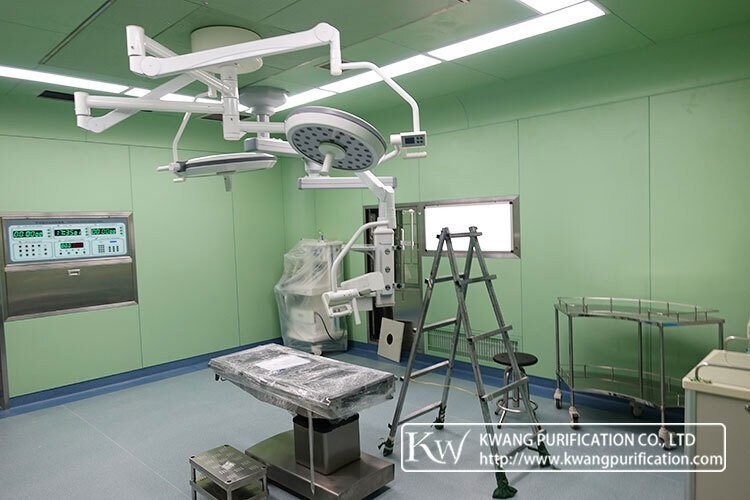Operating Room Purification Engineering: Ensuring Safe and Sterile Surgical Procedures
- 2024-01-31
- View 11
Operating rooms (ORs) are critical environments where complex surgical procedures are performed. Maintaining a sterile environment in the OR is crucial to ensure patient safety and prevent surgical site infections (SSIs) Operating room purification engineering refers to the process of creating and maintaining a sterile environment in the OR using various technologies and techniques. In this article, we will discuss the importance of OR purification engineering, the technologies and techniques used, and how they contribute to safe and successful surgical procedures.

Importance of Operating Room Purification Engineering
The OR is a highly regulated environment where the risk of infection is always present. An infection during a surgical procedure can lead to serious complications, extended hospital stays, and even death. Therefore, it is essential to maintain a sterile environment in the OR. The primary goal of OR purification engineering is to minimize the number of airborne particles, microorganisms, and contaminants in the OR to prevent SSIs.
Technologies Used in Operating Room Purification Engineering
HEPA Filters: High-Efficiency Particulate Air (HEPA) filters are used to filter out airborne particles as small as 0.3 microns. They are essential in maintaining a sterile environment in the OR by reducing the number of airborne bacteria and viruses.
UV-C Lights: Ultraviolet-C (UV-C) lights are used to kill microorganisms in the air and on surfaces. They are highly effective in reducing the risk of SSIs by destroying bacteria and viruses that may be present in the OR.
Positive Pressure Systems: Positive pressure systems are used to maintain a clean and sterile environment in the OR. These systems work by pushing clean air into the OR, creating a positive pressure that prevents contaminated air from entering the room.
Antimicrobial Surfaces: Antimicrobial surfaces are designed to inhibit the growth of bacteria and viruses on surfaces. These surfaces are commonly used in the OR to prevent the spread of infections.
Techniques Used in Operating Room Purification Engineering
Sterilization: Sterilization is the process of eliminating all forms of microorganisms, including bacteria, viruses, and fungi. This process is essential in maintaining a sterile environment in the OR and preventing SSIs.
Cleaning and Disinfecting: Cleaning and disinfecting are critical components of maintaining a sterile environment in the OR. These techniques involve removing visible dirt and debris from surfaces and then applying disinfectants to kill any remaining microorganisms.
Hand Hygiene: Hand hygiene is the most effective way to prevent the spread of infections in the OR. All healthcare workers should follow strict hand hygiene protocols before, during, and after surgical procedures.
Personal Protective Equipment: Personal protective equipment (PPE) is used to prevent the spread of infections in the OR. Healthcare workers should wear PPE, such as gowns, gloves, and masks, to protect themselves and the patient from the spread of microorganisms.
Conclusion
Operating room purification engineering is a critical component of maintaining a safe and sterile environment in the OR. By using various technologies and techniques, healthcare workers can reduce the risk of SSIs and ensure successful surgical procedures. Sterilization, cleaning and disinfecting, hand hygiene, and PPE are all essential components of OR purification engineering. Healthcare workers should follow strict protocols to maintain a sterile environment in the OR and prevent the spread of infections.
FAQs
1、What is an operating room?
An operating room is a specialized room in a hospital or surgical center where surgical procedures are performed.
2、What is the primary goal of operating room purification engineering?
The primary goal of operating room purification engineering is to maintain a sterile environment in the OR to prevent SSIs and ensure successful surgical procedures.
3、What technologies are used in operating room purification engineering?
Technologies used in operating room purification engineering include HEPA filters, UV-C lights, positive pressure systems, and antimicrobial surfaces. These technologies work together to reduce the number of airborne particles, microorganisms, and contaminants in the OR and maintain a sterile environment.
4、What techniques are used in operating room purification engineering?
Techniques used in operating room purification engineering include sterilization, cleaning and disinfecting, hand hygiene, and personal protective equipment (PPE). These techniques are essential in preventing the spread of infections in the OR and ensuring patient safety.
5、Why is hand hygiene important in the OR?
Hand hygiene is the most effective way to prevent the spread of infections in the OR. Healthcare workers should follow strict hand hygiene protocols before, during, and after surgical procedures to reduce the risk of SSIs and ensure successful surgical outcomes.
In conclusion, operating room purification engineering is a crucial aspect of maintaining a safe and sterile environment in the OR. Healthcare workers must use a combination of technologies and techniques to minimize the risk of infections and ensure successful surgical procedures. By following strict protocols and guidelines, healthcare workers can create a sterile environment that promotes patient safety and reduces the risk of SSIs.
